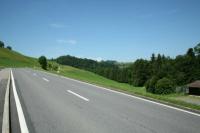Use food-safe paint for the kitchen
Do you value a healthy indoor climate and therefore want to use food-safe paint for your kitchen coating? Here you can read how it works with the right choice of colors.
If chemical compositions and fumes from wall paints for you not just a small one If they represent a nuisance, but a serious health hazard, then food-safe colors are the ones ideal solution. Read more about the use of these natural colors in the kitchen or living area here.
How to use the correct food-safe colors
- Natural colors for To brush of the living area can now be found in almost every well-stocked hardware store.
- Take your time when choosing biologically harmless colors, because the terms "organic" and "eco" are regulated by law, however, some manufacturers only exchange individual additions of a color mixture in order to comply with these legal requirements correspond.
- So when you're looking for food-safe paints to paint your kitchen, make sure you don't Only individual synthetic components are replaced by natural components became.
- If a manufacturer offers a real natural color, a maximum selection of vegetable and mineral raw materials should be made.
- Pay attention to the designation "aromatic-free", because with these aromatics, which are harmful to health they are derivatives of benzene, commonly used as a cleaning agent or solvent will.
- You should also attach great importance to the term “solvent-free”, because solvents usually persist based on hydrocarbons and evaporate after painting in the living space, so that breathing is severely impaired can.
Organic inks - usage tips
Organic paints for walls and ceilings are definitely part of an ecological lifestyle ...
You can safely use these natural colors in the kitchen area
- Casein colors contain the cheese material casein glue as a binding agent. Casein paints are waterproof and very washable after painting, as they do not form a film layer on the kitchen wall, but rather bond completely with the wall substrate.
- You can use casein paints directly on woodchip or lime plaster without hesitation.
- Glue paints are produced with glue as a binding agent and these food-safe paints are suitable for woodchip wallpaper, interior plaster and stuck old paintwork. Note here that distemper paints are not waterproof, but rather for areas in the kitchen that cannot get wet should be used.
- Glue paints are free of additives, vapor permeable and very suitable for allergy sufferers.
- Silicate paints have water glass as a mineral binder and are extremely resistant and suitable for numerous applications. The manufacturing process of silicification creates a natural, highly durable bond with the Underground guaranteed. These highly diffusible colors are also anti-algae and mold-resistant.
- However, depending on the manufacturer, silicate paints have different additives, so be sure to use them a 100% full declaration of the ingredients should be observed, this is only guaranteed by reputable manufacturers of high quality Products.
When using high-quality food-safe paints, note that you are also contributing to the Make climate protection, because the ingredients of high quality products are mostly from renewable sources Raw materials.


